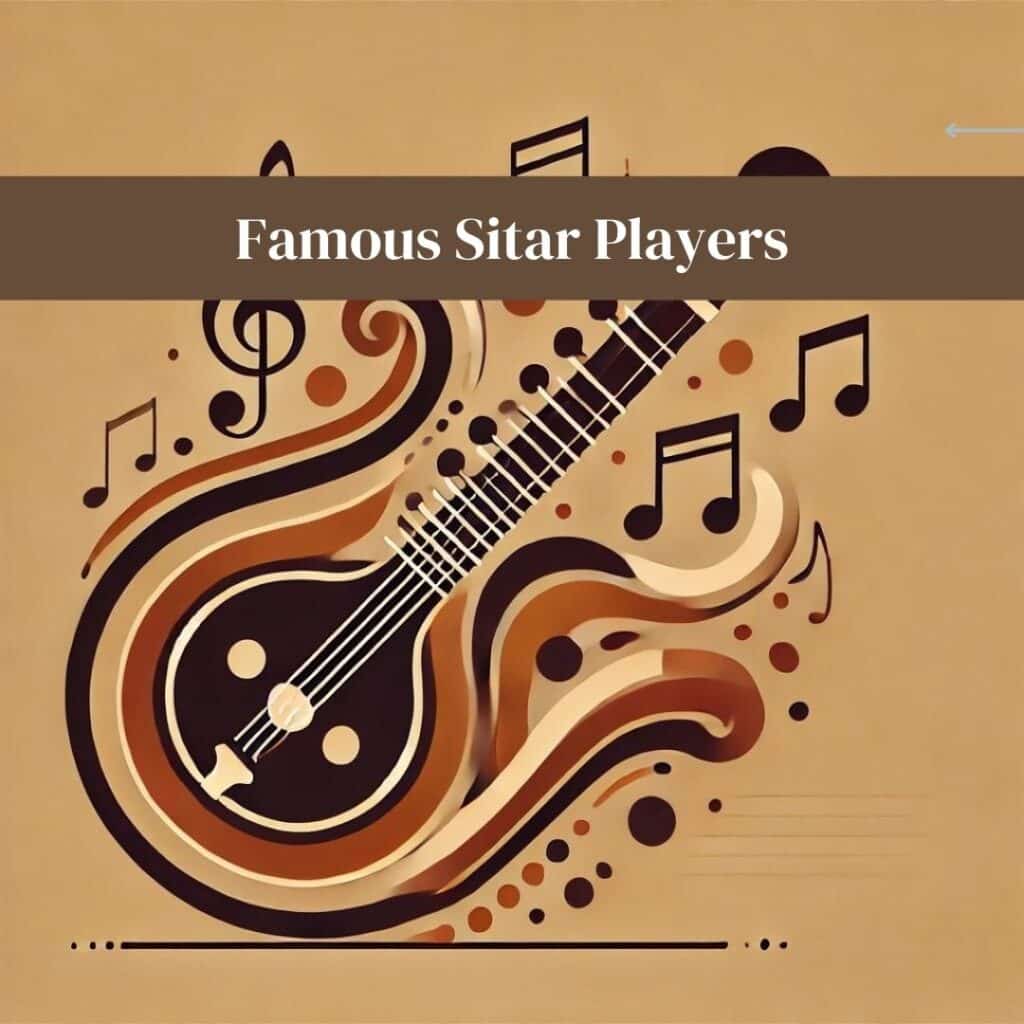1
. Introduction
The sitar, a plucked stringed instrument from India, has played a pivotal role in shaping the world of Indian classical music. Its intricate design and profound sound have captivated audiences globally. This article delves into the lives and contributions of some of the most famous sitar players who have left an indelible mark on music.
2. The Origin and Evolution of the Sitar
2.1 Historical Background
The sitar is believed to have evolved from the ancient Indian instrument, the veena, and has been influenced by Persian musical traditions. It became a prominent instrument in the Indian subcontinent during the medieval period, gradually gaining its distinct shape and playing style.
2.2 Development Through Different Eras
From the Mughal era to the 20th century, the sitar underwent significant modifications. During the Mughal period, the instrument’s popularity soared, and it became an essential part of court music. In the 19th and 20th centuries, the sitar became synonymous with Indian classical music, thanks to maestros who popularized its unique sound.
3. Legendary Sitar Players of the 20th Century
3.1 Ravi Shankar: Global Ambassador of Indian Music
Ravi Shankar is perhaps the most internationally recognized sitar player. His collaboration with Western musicians like George Harrison of The Beatles brought Indian classical music to a global audience. Shankar’s unique style, characterized by his deep understanding of ragas and rhythmic complexity, made him a cultural bridge between the East and the West.
3.2 Vilayat Khan: Innovator of Gayaki Ang
Vilayat Khan introduced the “Gayaki Ang,” a style that emulates the human voice, to sitar playing. His innovative approach involved bending notes and intricate slides, making the sitar sing like a vocalist. This style has had a lasting impact on how the sitar is played today.
3.3 Annapurna Devi: A Hidden Maestro
Annapurna Devi, a reclusive but immensely talented sitar and surbahar player, made significant contributions to the Maihar Gharana. Despite her limited public performances, her influence on students and her mastery over the instrument made her a legend in her own right.
3.4 Imrat Khan: The Torchbearer of Imdadkhani Gharana
Imrat Khan dedicated his life to preserving the Imdadkhani Gharana’s traditions, a school of sitar playing known for its intricate compositions and technical proficiency. His performances were marked by emotional depth and an unmatched technical prowess that showcased the versatility of the sitar.
4. Contemporary Sitar Virtuosos
4.1 Anoushka Shankar: Blending Tradition with Modernity
Anoushka Shankar, Ravi Shankar’s daughter, has carved her own niche by blending traditional sitar techniques with contemporary music. Her collaborations span various genres, including classical, electronica, and jazz, reflecting her versatility and innovation as a musician.
4.2 Shujaat Khan: Master of Khayal and Folk Fusion
Shujaat Khan, son of Vilayat Khan, is renowned for his unique style that combines elements of khayal singing with sitar playing. His improvisational skills and ability to fuse folk tunes with classical ragas make his performances captivating and fresh.
4.3 Nishat Khan: Bridging Classical and World Music
Nishat Khan, known for his dynamic playing style, bridges the gap between Indian classical music and world music. His innovative approach has expanded the sitar’s role in global music scenes, incorporating elements from jazz, flamenco, and Western classical music.
5. Contributions of Sitar Players to Global Music
5.1 Collaborations with Western Musicians and Bands
Famous sitar players like Ravi Shankar and Anoushka Shankar have collaborated with Western artists, introducing the sitar to new audiences. These collaborations have led to a fusion of styles, blending the intricate sounds of the sitar with Western musical traditions.
5.2 Influence on Jazz and Fusion Genres
The sitar has influenced jazz musicians and fusion artists, leading to the creation of new genres like Indo-jazz. Artists like John Coltrane and Yehudi Menuhin drew inspiration from sitar music, incorporating its unique scales and rhythms into their works.
5.3 Sitar in Film Scores and Popular Media
The unique sound of the sitar has found a place in film scores and popular media. From Bollywood to Hollywood, the sitar’s melodious strains have been used to evoke emotion, create atmospheric depth, and add an exotic flavor to music compositions.
6. The Sitar’s Role in Indian Classical Music Today
6.1 Continued Relevance in Contemporary Performances
The sitar remains a staple in Indian classical music concerts, with its soulful sound captivating audiences worldwide. Contemporary artists continue to push the boundaries, exploring new ragas and experimenting with different playing techniques.
6.2 The Evolution of Sitar Techniques and Styles
Modern sitar players are continually evolving the techniques and styles associated with the instrument. From incorporating electronic elements to experimenting with fusion genres, the sitar’s versatility is being showcased in new and innovative ways.
7. The Impact of Technology on Sitar Playing
7.1 Digital Platforms and Online Learning
With the rise of digital platforms, learning and teaching sitar have become more accessible. Online tutorials, virtual masterclasses, and digital performances have democratized access to sitar music, allowing enthusiasts worldwide to learn from the masters.
7.2 Innovations in Instrument Design
Technological advancements have led to innovations in sitar design, such as electric sitars and lightweight materials. These innovations have made the sitar more versatile and easier to play, attracting a new generation of musicians to the instrument.
8. Female Sitar Players Breaking Stereotypes
8.1 Anupama Bhagwat: Shattering Gender Norms
Anupama Bhagwat is one of the few female sitar players who have gained prominence in the traditionally male-dominated field of Indian classical music. Her dedication and skill have paved the way for other aspiring female musicians.
8.2 Mehtab Ali Niazi: Modern-Day Inspiration
Mehtab Ali Niazi is a contemporary female sitarist known for her unique style and innovative approach to music. She represents the growing number of women who are redefining gender roles in Indian classical music.
9. Lesser-Known Sitar Players
9.1 Ustad Abdul Halim Jaffer Khan: A Multifaceted Genius
Ustad Abdul Halim Jaffer Khan, known for his unique style combining traditional and innovative techniques, was a pioneer in introducing new sounds and ideas to sitar music. His contributions have enriched the instrument’s repertoire and playing styles.
9.2 Budhaditya Mukherjee: Upholding the Tradition
Budhaditya Mukherjee is a master of the sitar who has remained dedicated to preserving the traditional aspects of Indian classical music. His commitment to the art form has made him a respected figure in the world of sitar music.
10. Future of Sitar Music
10.1 Trends in the Next Generation of Musicians
The next generation of sitar players is more experimental, blending traditional Indian classical music with contemporary genres. This trend is likely to continue, leading to more innovative and diverse sitar music in the future.
10.2 Globalization and Its Impact on Indian Classical Music
Globalization has led to increased cross-cultural exchanges, influencing the evolution of Indian classical music. The sitar, in particular, has become a global instrument, appreciated by audiences worldwide for its unique sound and versatility.
11. Conclusion
11.1 Summary of Key Contributions of Sitar Players
Famous sitar players have significantly contributed to the global recognition and appreciation of Indian classical music. Their innovations, collaborations, and performances have showcased the sitar’s versatility and emotional depth.
11.2 The Ongoing Legacy of the Sitar
The sitar continues to inspire and captivate musicians and audiences worldwide. As new players emerge and technology evolves, the sitar’s rich legacy will undoubtedly continue to grow, blending tradition with modernity to create timeless music.
Faculty: Soumitra Thakur
Instagram:@thepinklotusacademia
Facebook: @thepinklotusacademia
Enquire Now: Click Here
Learn more: The Pink Lotus Academia
Youtube: The Pink Lotus Academia
Other Blogs: Click Here
Buy recommended Yoga Apparels: https://amzn.to/4cHOiCB













